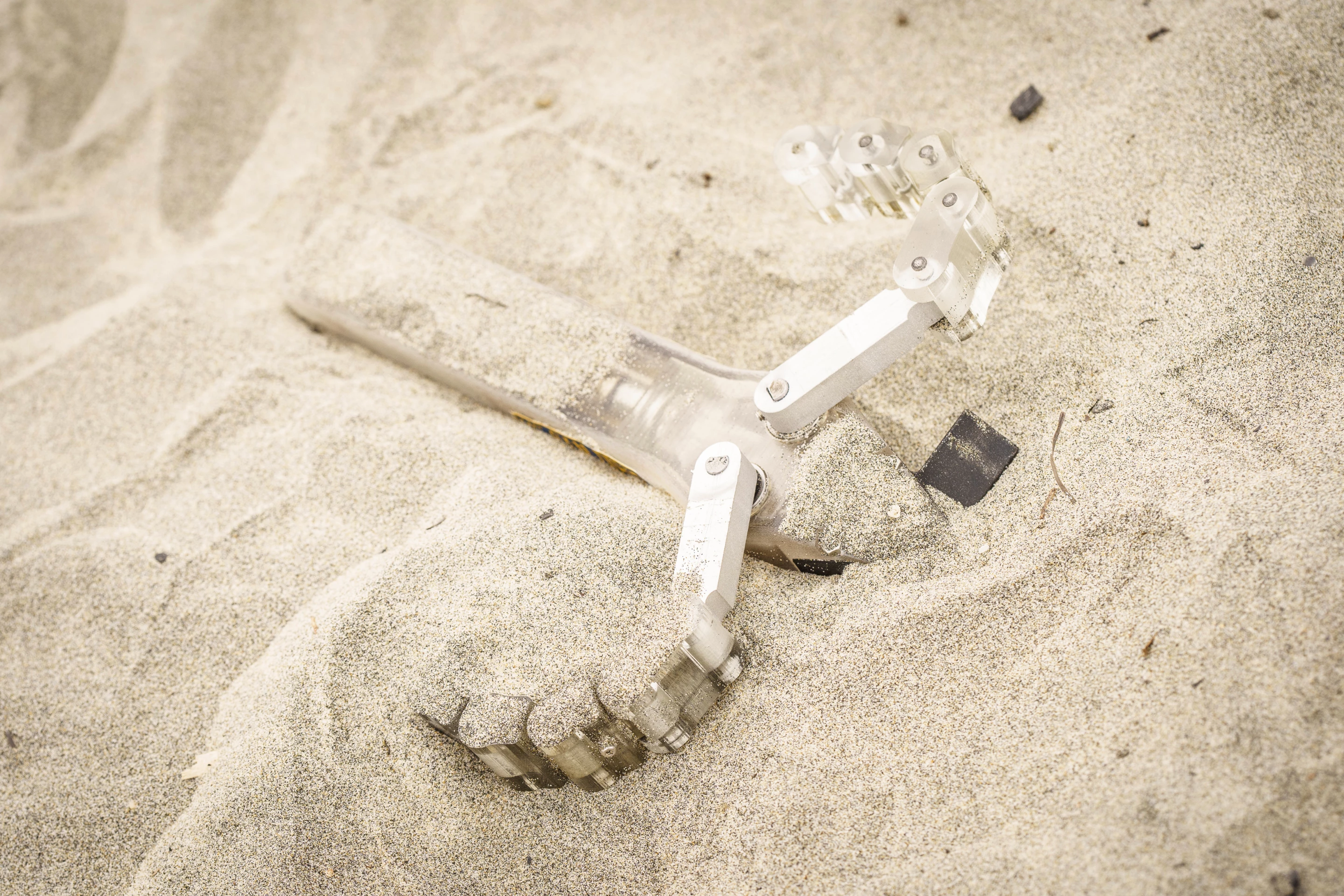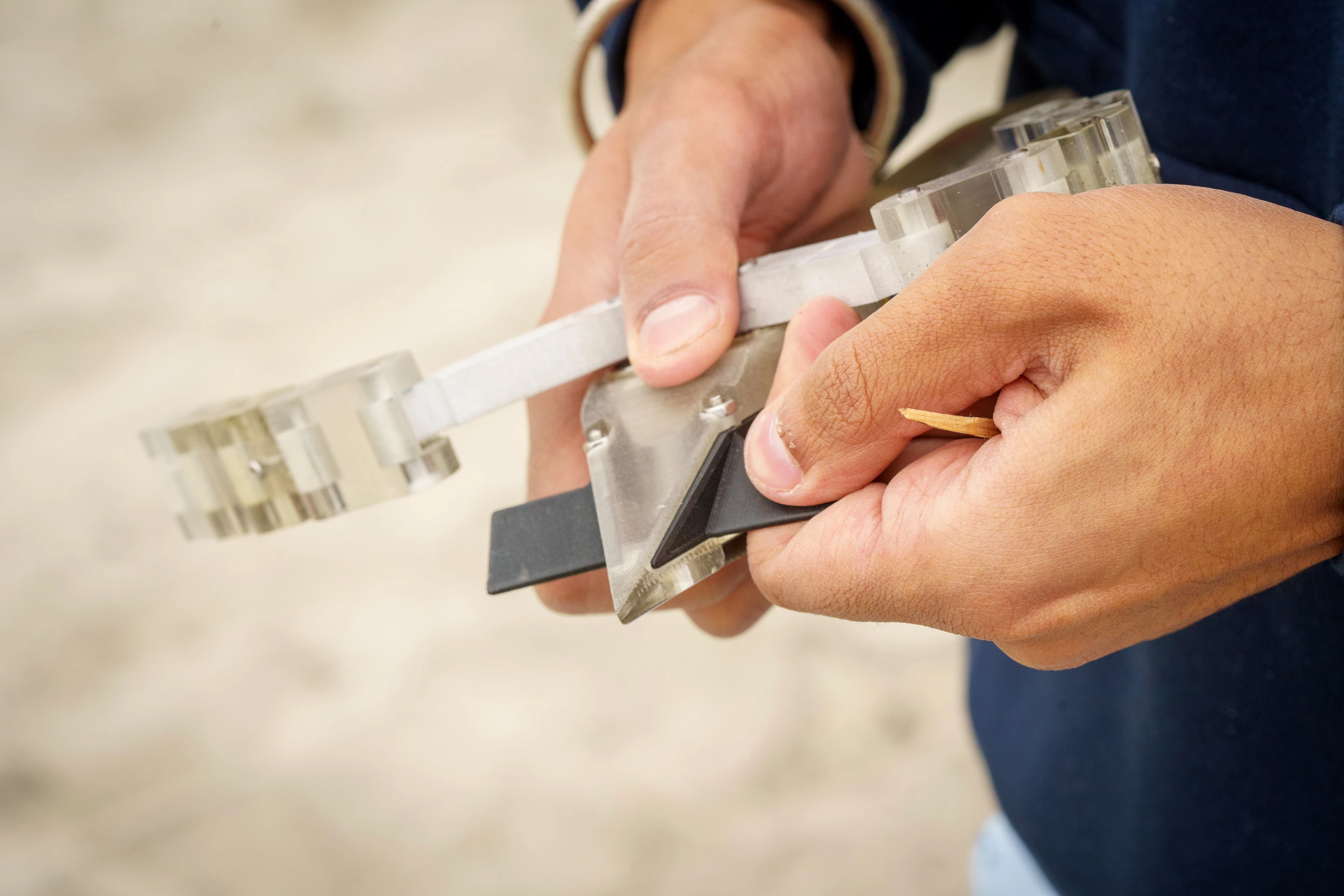When baby sea turtles hatch from their buried eggs, they use their powerful flippers to make their way up through the sand. A new "sand-swimming" robot, inspired by those hatchlings, could one day save lives or even explore other planets.
The experimental device was created at the University of California-San Diego by a team led by Shivam Chopra, who is a PhD student in the research group of Prof. Nick Gravish.
Measuring 25.6 cm long by 5.1 cm wide (10 by 2 in), the untethered robot's streamlined body contains a planetary gear motor, a battery and other electronics. It also features two articulated appendages on either side at the front, which serve the same purpose as a turtle's front flippers.

In order to move forward through the sand, the bot draws those appendages forward tucked in against its body, then pulls them back extended out to either side. This style of locomotion naturally causes the device to move upwards as it swims forward, which would limit its uses.
For that reason, its wedge-shaped head is equipped with a set of "terrafoils" – one on either side. These work like a submarine's diving planes, pushing the bot down to counteract its upward trajectory.
The end result is a robot that can move horizontally through the sand at a depth of 127 mm (5 inches) and a speed of about 4 meters (13 ft) per hour – plans call for the latter figure to be improved. It can be remotely controlled via Wi-Fi, turning left or right by independently varying the thrust of its appendages accordingly. And while its terrafoils are currently at a set angle, in the future they could be adjustable, letting the robot move up or down as needed.

As an added bonus, the device is able to detect and avoid hard obstacles in the sand surrounding it. It does so by sensing increasing resistance in the sand flow as its appendages make their "power strokes." For now, however, this technique only works for detecting items to the sides of the robot and above it, but not below or directly in front.
The robot has already been tested in a sand-filled tank in a lab, and in the sand of California's La Jolla Shores beach. It is hoped that the bot's descendants could one day be utilized in applications such as inspection of grain silos, detection of soil contaminants, search and rescue missions, or extraterrestrial exploration.
A paper on the research was recently published in the journal Advanced Intelligent Systems. The robot can be seen in sand-swimming action, in the video below.
Source: UC San Diego







